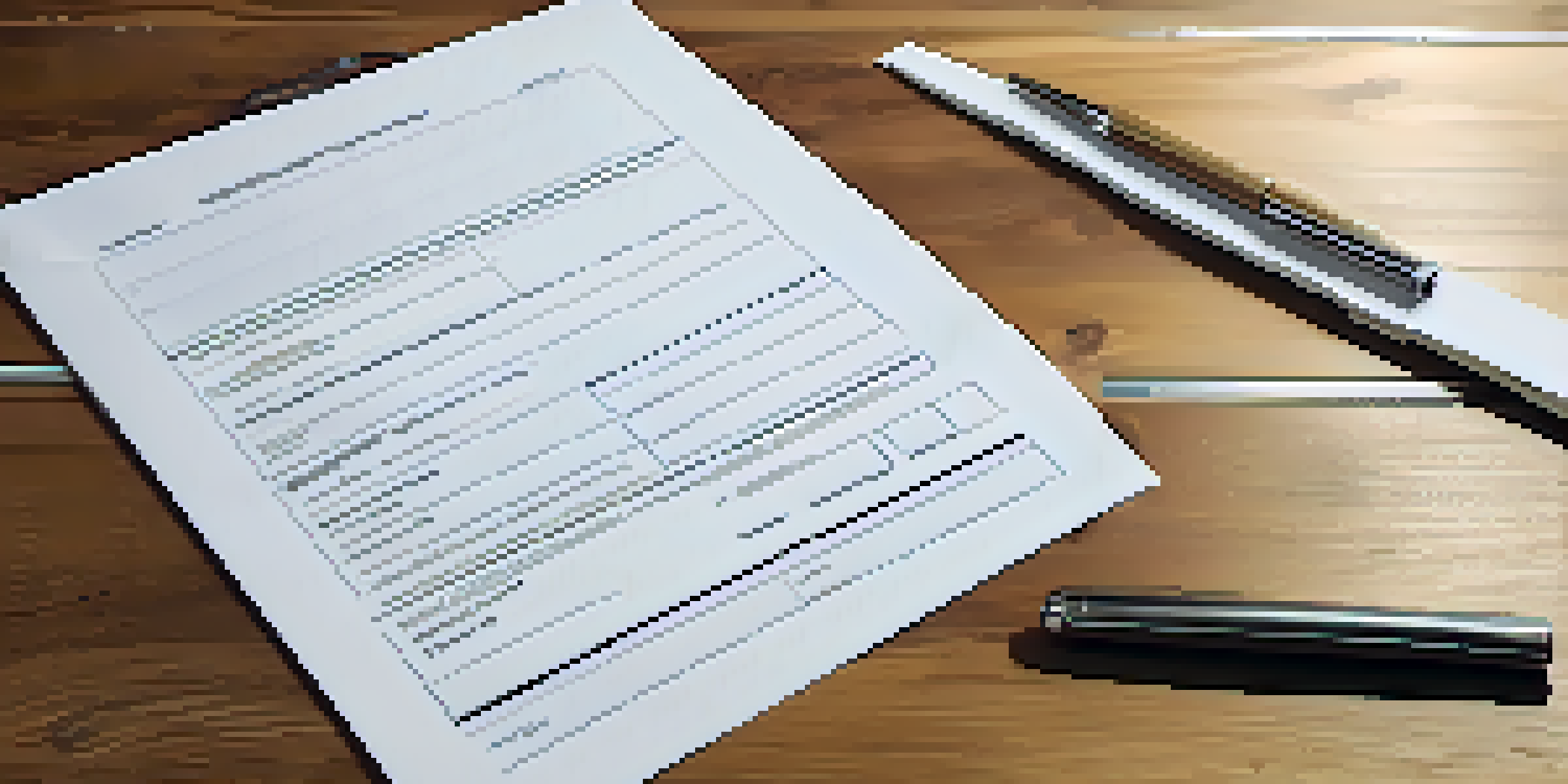Creating a Comprehensive Tenant Application Process

Understanding the Importance of a Tenant Application Process
A tenant application process is crucial in selecting reliable renters. It helps landlords evaluate potential tenants effectively, minimizing risks associated with property management. By establishing a thorough application process, you can ensure a smoother renting experience for both parties.
The single biggest problem in communication is the illusion that it has taken place.
Moreover, a well-structured application can save time and resources by filtering out unsuitable candidates early on. This not only leads to better tenant placements but also enhances the overall quality of your rental property. Ultimately, it’s about finding the right fit for your property and reducing turnover rates.
In addition, a comprehensive application process establishes clear expectations for potential tenants. It communicates your standards and requirements, leading to more informed applicants who are aware of what you are looking for in a tenant.
Defining Your Tenant Criteria and Requirements
Before diving into the application process, it’s essential to define your tenant criteria. This could include aspects like credit scores, rental history, income requirements, and even pet policies. Clear criteria help in establishing a baseline for evaluating applicants and can reduce discrimination claims.

For example, if you decide that a minimum credit score of 650 is necessary, make this clear in your listings. This way, prospective tenants know upfront whether they meet your requirements, which can save both parties time and effort.
Importance of Tenant Application Process
A thorough tenant application process helps landlords select reliable renters, minimizing risks and enhancing the rental experience.
Additionally, consider what additional documentation might be helpful, such as proof of income or references from previous landlords. This documentation can provide deeper insights into the applicant's reliability and suitability for your property.
Creating a Clear and Concise Application Form
Your application form is the cornerstone of the tenant application process. It should be straightforward, asking for essential information without overwhelming potential tenants. A well-designed form not only gathers necessary data but also reflects your professionalism as a landlord.
An ounce of prevention is worth a pound of cure.
Incorporate sections for personal details, employment history, rental history, and references. Make sure to include clear instructions for submission to avoid confusion. A clean, organized layout can make it easier for applicants to provide the required information swiftly.
Lastly, consider offering the application in both digital and paper formats to accommodate different preferences. This flexibility can encourage more applicants to complete the process, ultimately broadening your pool of potential tenants.
Implementing a Fair and Consistent Review Process
Once applications start rolling in, having a fair review process is essential. Consistency in evaluating each application ensures that all candidates are judged by the same standards. This not only fosters fairness but also helps avoid potential discrimination issues.
Create a checklist based on your defined criteria to help streamline the review process. This will allow you to score each applicant in various categories, making it easier to compare their qualifications objectively.
Define Clear Tenant Criteria
Establishing specific tenant criteria, such as credit scores and income requirements, allows for more efficient applicant evaluation and reduces discrimination claims.
Additionally, document your decisions and reasoning for accepting or rejecting applicants. This provides a clear record that can be beneficial if any disputes arise later, giving you peace of mind throughout the renting process.
Communicating with Applicants Throughout the Process
Communication is key in any tenant application process. Keep applicants informed about their status, whether they are accepted, on a waiting list, or denied. Prompt communication fosters goodwill and leaves a positive impression, even for those who may not be selected.
Consider sending an acknowledgment email when applications are received, outlining the timeline for decisions. This transparency shows potential tenants that you value their time and are committed to a respectful process.
Moreover, if a tenant is denied, providing constructive feedback can help them understand your decision. This courtesy can enhance your reputation as a landlord and might even encourage them to apply for future vacancies.
Conducting Background Checks and Verification
Once you've narrowed down your applicants, conducting background checks is a critical step. These checks can reveal important information, such as criminal records, credit history, and eviction reports. This due diligence helps ensure you’re selecting a trustworthy tenant.
Utilize reliable tenant screening services that comply with legal regulations to ensure the process is thorough and fair. Always obtain written consent from applicants before conducting these checks to respect their privacy.
Effective Communication is Key
Maintaining clear communication with applicants throughout the process fosters goodwill and leaves a positive impression, even for those not selected.
Remember, it's essential to be transparent about this part of the process. Let applicants know that background checks are standard procedure, which can help ease any concerns they may have.
Finalizing the Lease Agreement and Onboarding Process
After selecting your tenant, the next step is finalizing the lease agreement. This document should clearly outline the terms of the rental, including rent amount, payment due dates, and any rules regarding the property. A well-drafted lease can prevent misunderstandings and disputes down the line.
Take the time to review the lease with your new tenant, ensuring they understand all clauses and conditions. This not only reinforces your expectations but also empowers the tenant to feel confident in their responsibilities.

Lastly, consider a welcome package that includes essential information about the property, local amenities, and any regulations they need to follow. This thoughtful touch can help your tenants feel more at home and sets a positive tone for your landlord-tenant relationship.